World War 2 had shown that small infantry units could do more with increased firepower. The German Sturmgewehr 44 pointed the direction to the future with select fire capability and a less powerful cartridge.
The bolt action rifle still had some life in it. The first Arab-Israeli War fought in 1948 mainly with bolt action rifles with Mausers vs. Lee-Enfields yet again. The Portuguese were still using Mausers in Africa in the late 1950s.
The Swedes had developed a self-loading rifle, the AG-42 (Ljungman) in 1942. 30,000 were produced, so the Swedish Army was never fully outfitted with a self-loading rifle.
Nothing like defeat to make you change your ways. The French adopted the MAS 49 which fired a 7.5 mm cartridge. It had a 10 round detachable magazine and weighed 8.6 lbs. It saw service in Indochina, Algeria up through the 1970s.

MAS 49
Fabrique Nationale in Belgium had been working on a self-loading rifle design before World War 2. The result ws the FN Model 49. It had a 10 round detachable magazine and fired the Mauser 8 mm, .30-06, and Nato 7.62 x 51 mm cartridge. Initial sales were to Venezuela, Colombia, Egypt. There was a battalion of Belgians in the Korean War who used the FN Model 49. Someone told me of footage of French troops at Dien Bien Phu armed with Model 49s. It earned a good reputation in Korea. As good a rifle as it was, it would be eclipsed by the FN FAL. More on that in a little bit.

FN Model 49
The Soviets had fought World War 2 mostly with the bolt action Mosin-Nagant rifle and the PPsH series of submachine guns. They were intrigued by the German 7.92 x 33 mm cartridge used in the Sturmgewehr 44. The Soviets developed their own intermediate cartridge, 7.62 x 39 mm, and planned on four weapons built around the cartridge. The results were the SKS rifle, the AK-47 assault rifle, the RPD light machinegun. There had been a plan to produce a bolt action carbine, but someone wisely asked, why? The SKS was the first produced. It holds 10 rounds. It was quickly eclipsed by the AK-47 which fitted with Soviet doctrine of spray and pray at a short distance.
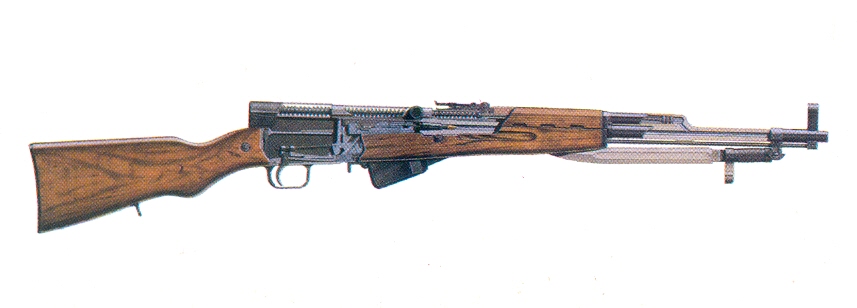
SKS
The Korean War amazingly was fought with a lot of bolt-action rifles. The British were still using their Lee-Enfields, most “UN” troops used American supplied M-1s. The North Koreans had a mix of captured Japanese and Soviet supplied equipment. The Chinese troops committed in November 1950 had a lot of captured American equipment taken from the Nationalists. They also had Chinese Mausers and Japanese Arisakas. T. R. Fehrenbach wrote in This Kind of War the Chinese were using sub-machine guns almost exclusively once battle lines became a stalemate in mid-1951. I have not been able to find a picture of North Koreans or Chinese using SKS rifles in the Korean War. David Hackworth mentions North Koreans using SKS rifles in his biography, but he might have been mistaken. The Soviets had a habit of sending their oldest equipment from warehouses for international revolution. They did it in the 1930s selling old Lebels and other flotsam and jetsam to the Spanish Republicans. Maybe a few SKS were sent to the North Koreans to try on battlefield conditions but I have seen no evidence of it.
The Americans found out the M-1 rifle lacked fire power against human wave attacks of Chinese hordes. The search was on for that elusive weapon that would combine submachine gun, self-loading rifle, and light machine gun.
The British had been working on a smaller cartridge for a new rifle. They came up with the 7 x 43 mm cartridge. To my mind, this is an almost perfect size for assault rifles. They also developed a revolutionary design, the EM-2 assault rifle with a “bull-pup” configuration. A bull-pup has the magazine behind the trigger allowing for a shorter barrel length. The EM-2 was adopted briefly by the British Army but killed when Winston Churchill was elected Prime Minister. The story is he made a deal to go with the new American 7.62 x 51 mm cartridge.

EM-2
The U.S. Army adopted the M-14 in 1957 using the 7.62 x 51 mm cartridge. It was 80% M-1 but longer. It did have a better range but uncontrollable on full auto. The story goes that the U.S. would adopt the FN FAL if NATO adopted the 7.62 cartridge. Col. Studler of Army Ordnance supposedly said the U.S. Army was not going to adopt a foreign cartridge nor a foreign rifle. A shame as the FN FAL combined with the British 7 x 43 mm cartridge would have been a winner. The FN Fusil Automatique Legere was adopted by a number of nations including Britain in 1954. It became known as “the right arm of the free world.” There was a wrinkle in that the West Germans wanted to produce the FN FAL under license. The Belgians weren’t keen on the idea considering they had been on the receiving end from the Germans in two world wars. The Germans ended up developing the Heckler & Koch G3 rifle. It has been described as “exceptionally dependable” in combat.

FN FAL
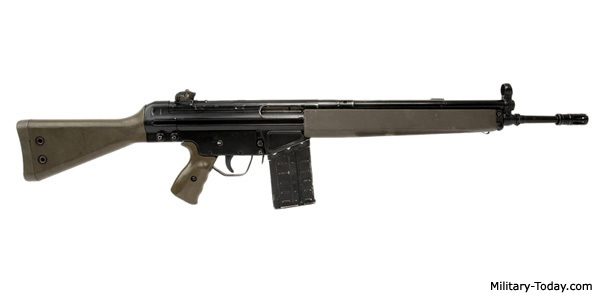
Heckler & Koch G3
Opinions vary on the M-14. It was long and heavy but accurate. It did not work so well in very cold conditions and the stock would swell in humid conditions.

M-14
The AK-47 obviously had the German Sturmgewehr 44 as inspiration in configuration. There are some differences internally with the bolt system. The Soviets had problems producing the stamped receivers the way the Germans did with the Sturmgewehr 44. It was not until the late 1950s they had the technology to do so. The AK-47 was then cheaper to produce than the SKS. I like the SKS. It is a fun rifle to shoot. One blog referred to it as the cockroach of rifles, it just won’t go away. The Chinese took up the SKS with enthusiasm as it fit in with their doctrine of ambush and sniping.
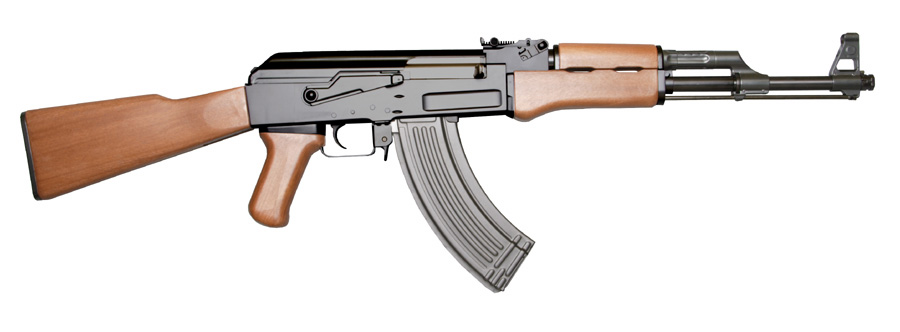
AK-47
One interesting rifle was the Czech vz 52. This rifle from the early 50s borrowed from the M-1 Garand and used the intriguing 7.62 x 45 mm cartridge. Again, a cartridge in that sweet spot for military rifles. The Soviets made them change to the 7.62 x 39 mm cartridge in the late 1950s. This rifle was exported for Third World insurgencies. This way the Soviets had plausible denial on accusations of supplying revolution. The Cubans bought a bunch and used them. I am curious which version was used in their African adventures in the 1970s and 80s.

VZ 52
The Czechs also produced a superior assault rifle, the vz 58 that replaced the vz 52. It resembles the AK-47 but uses a different design.
As I said last week, jungle warfare puts a premium on size, weight, and fire power. The M-14 was the wrong weapon for Vietnam. Enter the M-16 rifle. It had its genesis in the late 1950s with Eugene Stoner at ArmaLite. Armlite had a background in airplane design. The AR-10 fired the NATO 7.62 x 51 cartridge but lost out to the M-14 during the 1956 Springfield Armory trials. Meanwhile, Armalite developed the AR-15 which was smaller and fired the 5.56 x 45 mm cartridge. The AR series borrowed some things from the Sturmgewehr 44. The U.S. Air Force bought 8,500 rifles. 1,000 of those rifles were sent to South Vietnam for field testing. U.S. Special Forces started using the AR-15 in 1963.
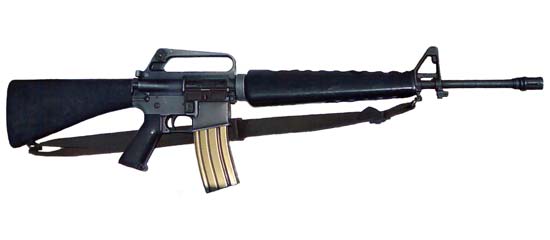
M-16
Secretary of Defense, Robert McNamara killed the M-14 in January 1963. There were birthing problems with the AR-15, now called the M-16. Accusations of sabotage by Army Ordnance has been made including the lack of cleaning kits, wrong powder in cartridges, and lack of chromium lining to prevent corrosion in the barrel. In time, these issues were worked out. The 5.56 mm cartridge is on the light side being .223 caliber. Some refer to it as a glorified varmint gun. There are apocryphal stories of the 5.56 failing to penetrate the jungle in fire fights, or “cut the brush” as some vets have said to me. Meanwhile, the FN FAL gave a stellar performance to Australian troops that served in Vietnam. Here we are over 50 years later and the platform is still in use.
The M-14 did make a comeback as a sharpshooter/sniper rifle in the U.S. Army where it gets high marks.
I have heard over 50 million AK-47s have been produced over the years. It has the reputation of ruggedness. Drop it in the mud, wipe it off, and it will fire. Accuracy is said to be another matter. A well- trained soldier can shoot the AK-47 with practice. The M-16 has bested the AK in the hands of poorly trained conscripts in Iraq or tribal militias in Somalia. The Chi-Coms were the ones who really supplied weapons to Third World insurgencies, especially in Africa starting around 1970. Makes you wonder if they had the long term plan in place. Most of those insurgencies would have died out if not for the constant infusions of communist weapons.
It seems most of the changes in more recent times with rifles has been with ergonomics. Rifles have been made lighter and more comfortable to hold and shoot. The biggest change in the past 30 years has been the adoption of more and more bull pup designs by Britain, France, and the Communist Chinese.
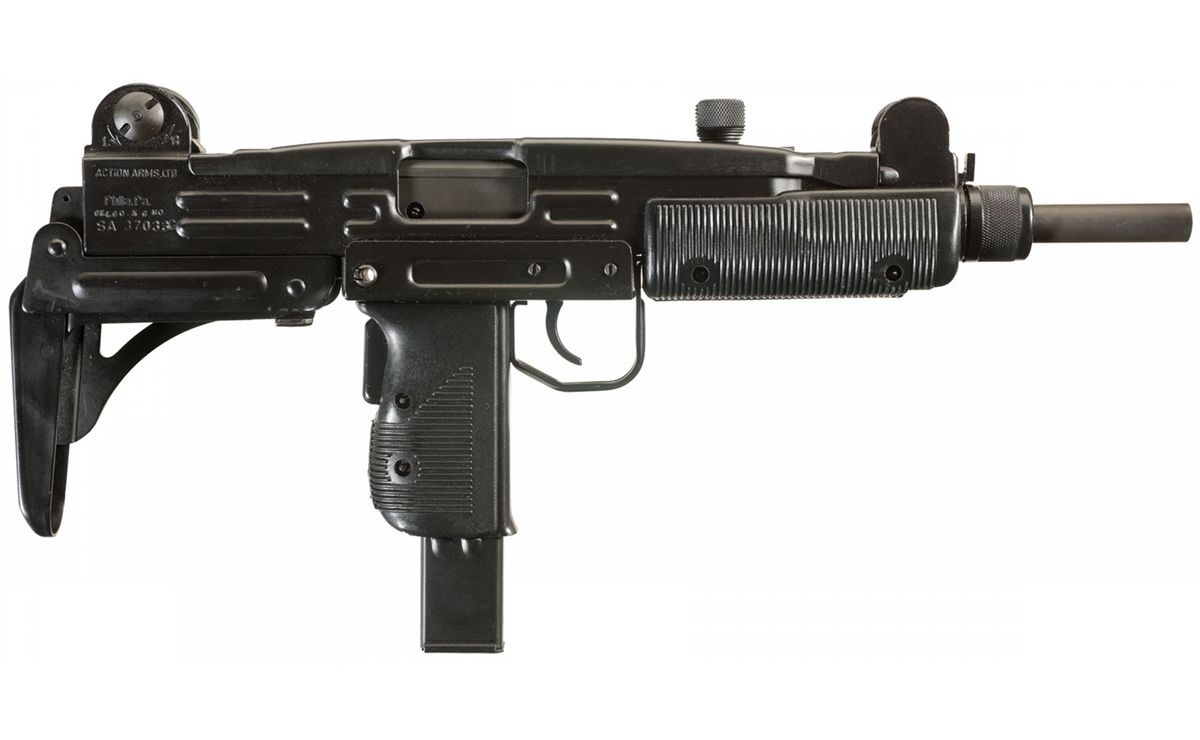
Uzi
The submachine gun continued to have a role. Uzi Galil created the famous Uzi submachine gun that was adopted by the Israeli Army in 1954. Heckler & Koch came out with the MP5 in 1965 that appears to be a favorite of security details.
Who knows, there might be some revolution in cartridges around the corner the way smokeless powder changed things in the 1880s. I can remember back in the 80s talk of fletchettes being adopted or even small particles propelled by electric charges. Variations on the AR-15 and AK-47 continue to dominate for the time being. There has been some talk of the U.S. Army adopting a 6.5 mm cartridge to provide something harder hitting.
I think one area for innovation will be for carbines used by para-military forces/constabularies/ gendarmeries in Fourth Generation Warfare. Something along the lines of the M-1 carbine using a cartridge not too powerful for urban settings but light and compact. A weapon using the 9 mm pistol cartridge with an extended barrel longer than a pistol for increased range and muzzle velocity might be one direction. Personal Defense Weapons (PDWs) might be the wave of the future.
Probably the short-barreled assault rifle will continue to be used until we no longer use chemical explosives to propel projectiles. M4Ax literally forever!
Morgan,
Well there”s the 6,5mm Credmoor and the ,300 Blackout rounds that have come out to address the problems between the 7,62 and 5,56 NATO.
It”s too bad the American army never wanted to adopt the FN and the British cartridge. The American genius for tinkering would’ve made them a formidable weapon to this day with tons of variants and configurations to choose from.
xavier
For a while the big thing was going caseless, having no cartridge to carry around and eject. If you could eliminate the cartridge, you could double your ammo load for the same weight. Alas, the caseless firearms would quickly overheat and fail. It turns out that the ejected cartridge carries a decent amount of heat with it. Cartridge = cooling.
It wasn’t the only problem with caseless, but that was the real showstopper. No one wanted a rifle that needed a cooling fan.
Maybe as Brett suggests, the basic short-barreled gunpowder-based carbine will last until we find an alternative to chemical explosives. Energy weapons like particle beams might replace it, for example, or rail-guns, or “smart” projectiles.
Could be some advance in armor technology might render the trusty military carbine-and-cartridge platform into a second-line weapon: if a full body armor is developed that can resist all but the most powerful chemical-explosion-based weapons, we might need to replace those with weapons that are capable of overcoming such armor.
We might well have come close to exhausting the usefulness of old-fashioned gunpowder-based guns entirely as front-line weapons, with new advances in armor technology perhaps overtaking the ability of handgun and carbine cartridges to penetrate the armor, shifting a focus toward the higher-powered stuff like RPGs, Barrett rifles, etc. Might future armor technologies resist even those powerful weapons?
It seems like the history of warfare has features subtle dance between advances in weapons technology, vs. advances in armor technology… we’ve virtually resumed the medieval “arms race” for better and better armor, which took a little time off when long bows and crossbows and gunpowder technologies improved to the point where traditional metal armor was no longer a practical defense, with the focus of the arms race going instead toward improving weapons technology in between the two eras where armor technology was king… much the same thing might be true of the modern armor race, with armor tech improving until the day that someone invents a new sort of gun that renders traditional military guns and modern armor alike obsolete, leading to new and ever-more powerful weapons technologies being the focus of R&D again, until someone develops a new armor tech that resists radiation, particle beams, rail-guns, etc….